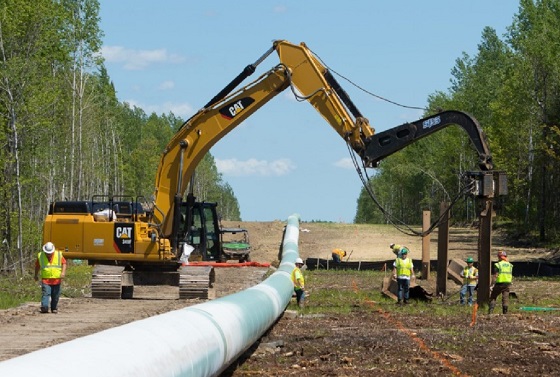Opinion
Fentanyl Fiasco: The Tragic Missteps of BC’s Drug Policy
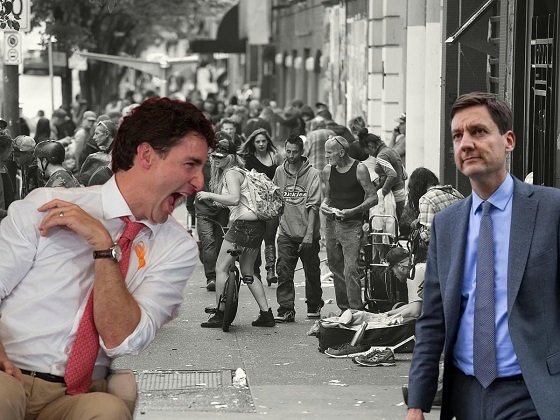
From The Opposition News Network
|
|
Unmasking the Destructive Cycle of Drug Policy in British Columbia. A Tale of Good Intentions and Dire Consequences
My fellow Canadians, it’s been a challenging time. I had initially planned to bring you the latest spectacle from the House of Commons, featuring Kristian Firth, but fate had other plans. A personal emergency struck closer to home—a fentanyl overdose in the family. This tragic event threw us headlong into the chaotic circus that is the British Columbia health system. Let me be frank: the system is a mockery. The privacy laws that supposedly protect us also shroud our crises in unnecessary mystery. When my uncle was found unconscious and rushed to the ICU, the walls of confidentiality meant we could not even ascertain his condition over the phone. They notify you of the disaster but cloak its nature in secrecy. It’s an absurdity that only adds to the anguish of families grappling with the realities of addiction.
Now, let’s address the elephant in the room: our approach to drug addiction. The authorities label it a disease, yet paradoxically offer the afflicted the choice between seeking help and remaining in their dire state. This half-hearted stance on drug addiction only perpetuates a cycle of relapse and despair. As we speak, thousands tumble through the revolving doors of our medical facilities—5,975 apparent opioid toxicity deaths this year alone, an 8% increase from 2022. Daily, we see 22 deaths and 17 hospitalizations, and yet our response remains as ineffective as ever. This issue transcends our national borders. The U.S. has openly criticized China for its role in the opioid crisis, accusing it of flooding North America with fentanyl—a drug so potent, it’s decimating communities at an unprecedented rate. Just last year, over 70,000 Americans succumbed to fentanyl overdoses. And what’s more damning? Reports from U.S. congressional committees suggest that the Chinese government might be subsidizing firms that traffic these lethal substances. Lets be clear this is a state-sponsored assault on our populace.
In response to this crisis BC NDP policymakers have championed the notion of “safe supply” programs. These initiatives distribute free hydromorphone, a potent opioid akin to heroin, with the intention of steering users away from the perils of contaminated street drugs. At first glance, this approach might seem logical, even humane. However, the grim realities paint a far different picture, one where good intentions pave the road to societal decay. Addiction specialists are sounding the alarm, and the news isn’t good. While hydromorphone is potent, it lacks the intensity to satisfy fentanyl users, leading to an unintended consequence: diversion. Users, unappeased by the drug’s effects, are selling their “safe” supply on the black market. This results in a glut of hydromorphone flooding the streets, crashing its price by up to 95% in certain areas. This collapse in street value might seem like a win for economic textbooks, but in the harsh world of drug abuse, it’s a catalyst for disaster. Cheap, readily available opioids are finding their way into the hands of an ever-younger audience, ensnaring teenagers in the grips of addiction. Far from reducing harm, these programs are inadvertently setting the stage for a new wave of drug dependency among our most vulnerable.
Programs designed to save lives are instead spinning a web of addiction that ensnares not just existing drug users but also initiates unsuspecting adolescents into a life of dependency. What’s needed isn’t more drugs, even under the guise of medical oversight, but a robust support system that addresses the root causes of addiction yet, the stark reality on the streets tells a story of systemic failure. Let’s dissect the current approach to handling addiction, a condition deeply intertwined with our societal, legal, and health systems.
Take a typical scenario—an individual battling the throes of addiction. Many of them find themselves ensnared by the law, often for crimes like theft, driven by the desperate need to sustain their habit. Yes, many addicts find themselves behind bars, where, paradoxically, they claim to clean up. Jail, devoid of freedom, ironically becomes a place of forced sobriety.
Now, consider the next step in this cycle: release. Upon their release, these individuals, now momentarily clean, are promised treatment—real help, real change. Yet, here’s the catch: this promised help is dangled like a carrot on a stick, often 30 or more days away. What happens in those 30 days? Left to their own devices, many relapse, falling back into old patterns before they ever step foot in a treatment facility.
This brings us to a critical question: why release an individual who has begun to detox in a controlled environment, only to thrust them back into the very conditions that fueled their addiction? Why not maintain custody until a treatment spot opens up? From a fiscal perspective, this dance of incarceration, release, and delayed treatment is an exercise in futility, burning through public funds without solving the core issue. Moreover, from a standpoint of basic human decency and dignity, this system is profoundly flawed. We play roulette with lives on the line, hoping against odds for a favorable outcome when we already hold a losing hand. This isn’t just ineffective; it’s cruel.
Final Thoughts
As we close the curtain on this discussion, let’s not mince words. The BC system’s approach to drug addiction treatment isn’t just flawed; it’s a catastrophic failure masquerading as mercy. Opposition leader Pierre Poilievre has hit the nail squarely on the head in his piece for the National Post. He articulates a vision where compassion and practicality intersect, not through the failed policies of perpetual maintenance, but through genuine, recovery-oriented solutions. His stance is clear: treat addiction as the profound health crisis it is, not as a criminal issue to be swept under the rug of incarceration.
Contrast this with the so-called ‘safe supply’ madness—a Band-Aid solution to a hemorrhaging societal wound. In the dystopian theatre of the Downtown Eastside, where welfare checks and drug dens operate with the efficiency of a grotesque assembly line, what we see is not healthcare, but a deathcare system. It’s a cycle of despair that offers a needle in one hand and a shot of naloxone in the other as a safety net. This isn’t treatment; it’s a perverse form of life support that keeps the heart beating but lets the soul wither.
Come next election in BC, if any provincial party is prepared to advocate for a true treatment-first approach, to shift from enabling addiction to empowering recovery, they will have my—and should have your—unwavering support. We must champion platforms that prioritize recovery, that respect human dignity, and that restore hope to the heartbroken streets of our communities.
The NDP BC government’s current model perpetuates death and decay under the guise of progressive policy. It’s a cruel joke on the citizens who need help the most. We can no longer afford to stand idly by as lives are lost to a system that confuses sustaining addiction with saving lives. Let’s rally for change, for recovery, for a future where Canadians struggling with addiction are given a real shot at redemption. This isn’t just a political imperative—it’s a moral one. The time for half-measures is over. The time for real action is now.
Become a supporter of The Opposition with Dan Knight .
For the full experience, click here to upgrade your subscription.
National
Canada Needs an Alternative to Carney’s One Man Show
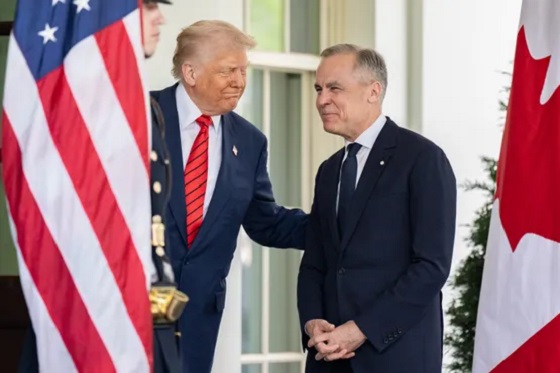
When the Carney government’s honeymoon is over, and its missteps on a variety of fronts become more evident, the search will begin in earnest for “alternatives”. Looking ahead, what might such alternatives be?
On the fiscal front, the recent federal budget gets off on the wrong foot by attributing Canada’s economic woes to major global events and Trump’s tariffs, without in any way acknowledging the consequences of a decade of mismanagement by the Trudeau regime. The budget also still contains references to Net Zero on the climate change front, a Carney fixation. What an alternative budget might look like is a discussion for the weeks ahead, but it might begin by calling for a federal commitment to an alternative Net Zero: Federal Expenditures Minus Federal Revenues to Equal Zero by 2030.
Balancing the federal budget will require a major downsizing of the massive federal bureaucracy. But the downsizing method chosen by the Carney government is an old and unimaginative approach which simply doesn’t work – charging the bureaucracy itself to define and implement its own downsizing[1]. The alternative? Establishing a completely independent outside agency to tackle the task – an improved Canadianized version of Trump’s Department of Government Efficiency (DOGE) or its UK version as being developed by Reform UK.
On the economic front and the need for industrial projects to stimulate an economic recovery, the Carney government predictably puts its faith in its own ability to pick winners and losers, and in a government-run Major Projects Office to guide the winners. A better alternative? Issue a Request for Proposals from the private sector leaders of Canada’s key industrial sectors – especially those in the natural resource sectors which are Canada’s greatest strength – to identify what the market place and the investment community, not politicians and bureaucrats, believe to be the most stimulative and urgently required projects and the conditions for advancing them. Not surprisingly, one of the main conditions will likely be for an over-regulating over-taxing federal government to “get out of the way”.
On the national unity front, federal-provincial relations are being strained to the breaking point by major federal intrusions in areas of provincial jurisdiction, fueling secessions movements in both Quebec and western Canada. The alternative? A federal Act Respecting Provincial Sovereignty which repeals or amends those statutes authorizing such intrusions in areas the constitution clearly assigns to the provinces – natural resources, health, municipal governance, property and civil rights – to eliminate or reduce federal intrusiveness. Insist also that both levels of government “stay in their lanes”, with the federal government focusing on improving its performance in those areas where no one disputes its jurisdiction or responsibility – foreign affairs, trade and commerce, indigenous affairs, defense, and monetary policy.
Then there is the tariff front where US tariffs and Canada’s erratic and ineffective responses are raising prices and killing jobs, as tariff wars always do, while seriously damaging Canada-US relations. Mr. Carney’s approach has been to first impose counter-tariffs and then withdraw them – elbows up then elbows down – while engaging sporadically in high-level elite-to-elite talks in Washington.
The alternative? Be advised, and be accompanied to Washington, by deal-making representatives of the sectors which the US most needs to become energy self-sufficient – one of Trump’s main objectives. Begin to seek the support of Trump’s constituency for tariff-modification policies – on Main Street not Wall street and in Middle not Washington America – the people Trump must listen to in order to satisfy and maintain his political base. Communicate with that constituency through the independent US media and the Rogan-Carlson-Shapiro media that Trump’s constituency talks and listens to. And begin to ally Canadians more closely with American friends and associates seeking to ensure that more tariff-modifying Republicans are elected to the US Congress in the 2026 Congressional elections.
On the leadership front, more and more Canadians are becoming disillusioned with the “one man show” style of political leadership – first from Justin Trudeau and now Mark Carney – self-absorbed politicians who want to be “the bride at every wedding and the corpse at every funeral, just as long as all eyes are upon them”.
The Budget is the Carney Budget, with Finance Minister Champagne merely the budget speech reader. It is Mr. Carney who goes to Washington and gets the photo ops, with Minister LeBlanc, listed as the Minister Responsible for Canada-US Trade, merely carrying the suitcases. It is Mr. Carney who announces the Big Projects and must even participate in the Grey Cup coin toss, notwithstanding the boos of the crowd who came to watch football not political posturing.
The Alternative? A visible, competent Leadership Team at the federal level, with the PM as the captain but visibly surrounded by strong, regional, and sectoral lieutenants with executive experience – Mackenize King’s War Cabinet a possible model to emulate.
Finally, a key question – who will forcefully and effectively represent these alternatives in the federal political arena? Could it be the current Leader of the Official Opposition? If in the days ahead, he were to become more than the Leader of the Opposition but Leader of the Official Alternative, could he not yet become the Leader of the Alternative Government Canada so desperately needs?
[1] The Comprehensive Expenditure Review described in the recent federal budget asked “federal departments and agencies” to conduct a thorough review of their own organizations, programs, and activities – subject to numerous politically motivated limitations – and under the ultimate supervision of politicians – a Cabinet Committee and the Prime Minister. (Budget 2025, page207)
Daily Caller
Tech Mogul Gives $6 Billion To 25 Million Kids To Boost Trump Investment Accounts


From the Daily Caller News Foundation
Billionaire Michael Dell and his wife, Susan, announced Monday that they will give 25 million American children a $250 deposit as an initial boost to President Donald Trump’s new investment program for children.
The Dells’ pledge totals $6.25 billion and will be routed through the Treasury Department. The goal, they say, is to extend access to the federal Invest America program — referred to as “Trump accounts” — established by the One Big Beautiful Bill Act, signed into law by the president in July.
The federal program guarantees a $1,000 federally funded account for every child born from 2025 through 2028, but the Dells’ money will instead cover children 10 years old and younger in ZIP codes where the median household income is under $150,000, according to Bloomberg.
Dear Readers:
As a nonprofit, we are dependent on the generosity of our readers.
Please consider making a small donation of any amount here.
Thank you!
“What inspired us most was the chance to expand this opportunity to even more children,” the Dells wrote in the press release. “We believe this effort will expand opportunity, strengthen communities, and help more children take ownership of their future.” (RELATED: Trump Media Company To Create Investment Funds With Only ‘America First’ Companies)
Dell, founder and CEO of Dell Technologies with a net worth of about $148 billion, has been one of the most visible corporate leaders championing the Trump accounts. In June, he joined Goldman Sachs CEO David Solomon, Uber CEO Dara Khosrowshahi, and others at a White House roundtable promoting the initiative.
In addition to the new $6.25 billion pledge, Dell Technologies committed to matching the government’s $1,000 contribution for the children of its employees. Other companies, such as Charter Communications, Uber, and Goldman Sachs, have said they are willing to match the government’s contributions when the accounts launch.
“This is not just about what one couple or one foundation or one company can do,” the couple wrote. “It is about what becomes possible when families, employers, philanthropists, and communities all join together to create something transformative.”
Starting July 4, 2026, parents will be able to open one of the accounts and contribute up to $5,000 a year. Employers can put in $2,500 annually without it counting as taxable income.
The money must be invested in low-cost, diversified index funds, and withdrawals are restricted until the child turns 18, when the funds can be used for college, a home down payment, or starting a business. Investment gains inside the account grow tax-free, and taxes are owed only when the money is eventually withdrawn.
The accounts will “afford a generation of children the chance to experience the miracle of compounded growth and set them on a course for prosperity from the very beginning,” according to the Trump administration.
The broader effort was originally spearheaded in 2023 by venture capitalist Brad Gerstner, who launched the nonprofit behind the Invest America concept.
“Starting 2026 & forevermore, every child will directly share in the upside of America! Huge gratitude to Michael & Susan for showing us all what is possible when we come together!” Gerstner wrote on X.
-

 Energy2 days ago
Energy2 days agoCanadians will soon be versed in massive West Coast LPG mega-project
-
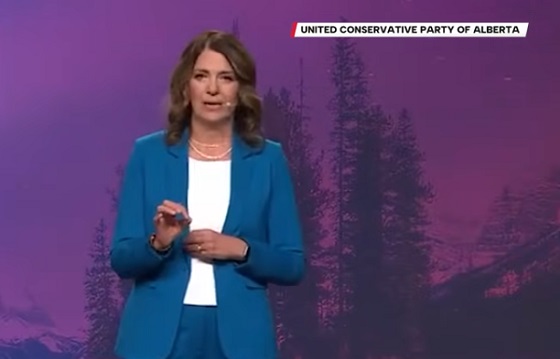
 Alberta2 days ago
Alberta2 days agoKeynote address of Premier Danielle Smith at 2025 UCP AGM
-

 Daily Caller2 days ago
Daily Caller2 days agoTom Homan Predicts Deportation Of Most Third World Migrants Over Risks From Screening Docs
-
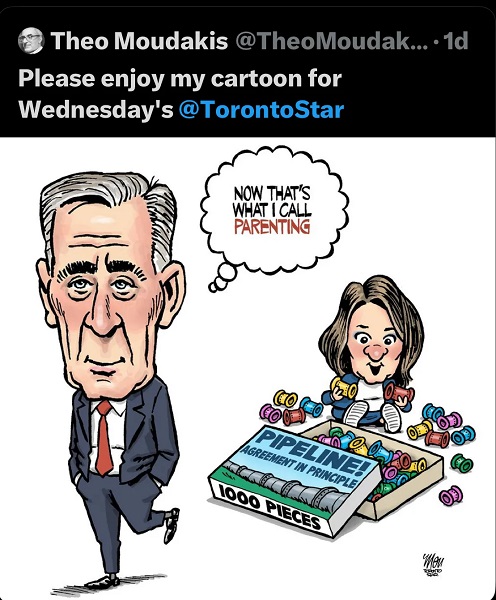
 National1 day ago
National1 day agoMedia bound to pay the price for selling their freedom to (selectively) offend
-
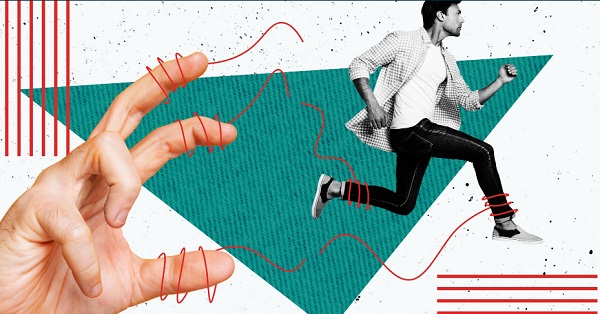
 C2C Journal1 day ago
C2C Journal1 day agoLearning the Truth about “Children’s Graves” and Residential Schools is More Important than Ever
-

 Artificial Intelligence2 days ago
Artificial Intelligence2 days ago‘Trouble in Toyland’ report sounds alarm on AI toys
-

 Daily Caller6 hours ago
Daily Caller6 hours agoTech Mogul Gives $6 Billion To 25 Million Kids To Boost Trump Investment Accounts
-

 Alberta1 day ago
Alberta1 day agoNew era of police accountability



